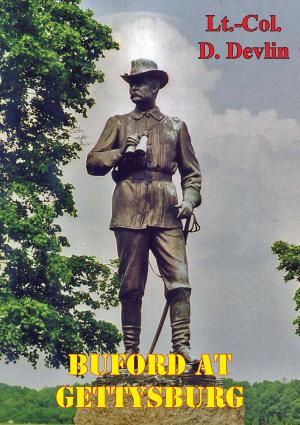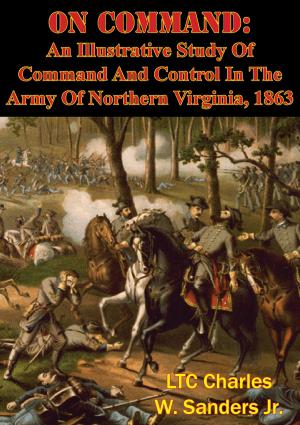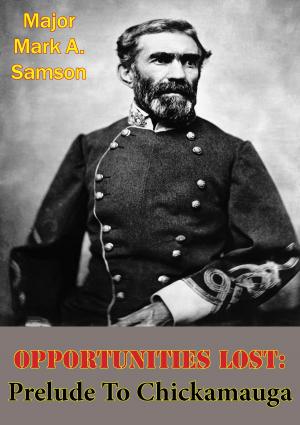Lee Builds An Army From Malvern Hill To Second Manassas
Nonfiction, History, Modern, 19th Century, Americas, United States, Civil War Period (1850-1877), Military| Author: | Major Frederick B. Hodges | ISBN: | 9781782895886 |
| Publisher: | Golden Springs Publishing | Publication: | August 15, 2014 |
| Imprint: | Golden Springs Publishing | Language: | English |
| Author: | Major Frederick B. Hodges |
| ISBN: | 9781782895886 |
| Publisher: | Golden Springs Publishing |
| Publication: | August 15, 2014 |
| Imprint: | Golden Springs Publishing |
| Language: | English |
Robert E, Lee, in his first campaign as the new commander of the Army of Northern Virginia, stopped the Union offensive against Richmond in a series of engagements known as the Seven Days. Although eventually successful, Confederate operations were clumsy and erratic and often missed opportunities to secure greater success. At the end of the Seven Days Lee reorganized his forces and began preparations for his next campaign. This new campaign, which resulted in the Battle of Second Manassas just two months later, is widely considered to be one of Lee's most brilliant operations.
The purpose of this monograph is to identify the changes and improvements that occurred within Lee's army which enabled it to show this vast improvement in such a short time span. The monograph uses LTC James Dubik's model for campaign analysis which is a modification of the familiar “ends, ways, and means” characterization of campaign planning. It evaluates four components of a campaign: intellectual, cybernetic, psychological-physical, and harmonic as a methodology for comparative analysis.
Despite his inexperience, Lee was able to learn from his first campaign. He could recognize what needed to be done and had the patience, intelligence, and courage to do it. Each of the adjustments and modifications he made were important but not decisive by themselves. It was the synergism of wise personnel and organization changes combined with improved operational planning which proved to be the secret in transforming Lee's troops into the legendary Army of Northern Virginia.
Robert E, Lee, in his first campaign as the new commander of the Army of Northern Virginia, stopped the Union offensive against Richmond in a series of engagements known as the Seven Days. Although eventually successful, Confederate operations were clumsy and erratic and often missed opportunities to secure greater success. At the end of the Seven Days Lee reorganized his forces and began preparations for his next campaign. This new campaign, which resulted in the Battle of Second Manassas just two months later, is widely considered to be one of Lee's most brilliant operations.
The purpose of this monograph is to identify the changes and improvements that occurred within Lee's army which enabled it to show this vast improvement in such a short time span. The monograph uses LTC James Dubik's model for campaign analysis which is a modification of the familiar “ends, ways, and means” characterization of campaign planning. It evaluates four components of a campaign: intellectual, cybernetic, psychological-physical, and harmonic as a methodology for comparative analysis.
Despite his inexperience, Lee was able to learn from his first campaign. He could recognize what needed to be done and had the patience, intelligence, and courage to do it. Each of the adjustments and modifications he made were important but not decisive by themselves. It was the synergism of wise personnel and organization changes combined with improved operational planning which proved to be the secret in transforming Lee's troops into the legendary Army of Northern Virginia.




![Cover of the book Analysis Of The Relationship Between Technology And Strategy And How They Shaped The Confederate States Navy [Illustrated Edition] by Major Frederick B. Hodges](https://www.kuoky.com/images/2014/august/300x300/9781782896067-yTa1_300x.jpg)










